Courtesy of Buzzfeed
By now, you would probably have read, viewed or heard about the newest word coined by US President Donald Trump.
Happening just after midnight, the leader of the free world did what he normally did in the wee hours of the morning.
He sent out a tweet.
However, it wasn’t any ordinary tweet. Even though it came from the social media savvy head of the world’s most powerful nation.
Rather than berate a political opponent or share about his administration’s latest position, Trump’s tweet left the entire Twitterverse bewildered, befuddled and bemused.
Here’s what it said:
After sending it out at 12.06 am on 31 May 2017 (US Eastern time), it was reported that President Trump retired for the night. The tweet was only deleted by 6.00 am the next morning.
By then, the entire Internet was ablaze. A simple search on Google revealed 5.71 million results for the term “covfefe”!
Donald Trump isn’t a stranger to online controversy. His entire presidential campaign (which he won) was predicated on his skillful use of incendiary and emotionally arousing social media content.
While President Trump’s tweet was a faux pas of epic viral proportions, it did demonstrate a couple of interesting things about how information spreads and goes viral in the online world.
Six Hours is Forever Online
News breaks extremely fast in the social and digital age – even past the midnight hour. The old adage that the Internet never sleeps is true.
President Trump’s Twitter troubles reminded me of the earlier (and much infamous) tweet by Justine Sacco.
In Sacco’s case, she tweeted “Going to Africa. Hope I don’t get AIDS. Just kidding. I’m white!” to her measly 170 Twitter followers, switched her phone to flight mode, and went so sleep for 11 hours as the plane flew from Heathrow to Cape Town.
By the time she landed, the entire Internet erupted in a huge uproar. Sacco ended up losing her job and being forced into hiding.
The Internet Does Not Forget
We do know that President Trump deleted his tweet. However, you can still find countless versions of it floating out there in the Internet.
Just type “covfefe tweet” into Google and look at all the number of screen captures out there – many at different times of the night.
Humour is Yuge on Social Media
According to Professor Jonah Berger in his book “Contagious”, there are four kinds of emotionally arousing content which gets shared very often. I call them the four ‘A’s:
- Awe
- Anger
- Anxiety
- Amusement (ie humour)
In the case of President Trump’s latest Twitter trip-up, he probably managed to trigger the emotions of awe (can a president of a country tweet something like that?), anger (how could he do so?), and amusement.
Especially amusement. Which brings us to our next point.
Instant Memes and Parodies
The parodies and memes came thick and fast. Barely 24 hours after the covfefe kerfuffle, the Internet spewed out a continual stream of memes and parodies.
Here are some of the more hilarious and fabulous online comebacks – including one from Trump’s political rival Hillary Clinton!
Courtesy of Hillary Clinton
Breakneck Velocity of Virality
Like previous episodes of extreme virality such as the United Airlines dragging incident, and Nikon’s photo contest fiasco, things happened very quickly online.
In fact, the speed of virality on the Internet can be so fast that it took literally days for these videos to hit 100 million views each.
Courtesy of Statista
Unfortunately, I couldn’t find such a study on tweets, but I’m sure that Donald Trump’s tweets would be near the top!
Donald Trump has Immense Social Media Influence
My last point – one which I’ve held since the last US Presidential Election – is this:
Donald Trump is a master of social media.
And he certainly knew how to play the game – for maximal effect.
In this interesting article on Harvard Business Review, the authors highlighted that Trump’s use of provocative online content helped him to gain scale quickly. Quoting from the article:
“Trump’s tweets are provocative because they strike raw nerves, speaking boldly to themes that people struggle to work through: race, nationalism versus globalism, financial insecurity, status inequity, sexism, and more. Fans cheer him on by retweeting and favoring his messages, while his enemies hope to get under his skin through their posts and replies. Trump uses tweets to seek cultural resonance, today’s branding nirvana, and he finds it.”
So what did the US President do after he deleted his misplaced tweet?
Well, he didn’t get into a frenzy or tried to cover it up. Instead, he decided to laugh it off the next morning with the following tweet:
Courtesy of @realDonaldTrump
What are your thoughts on the Donald Trump’s covfefe tweet? And which word do you think he was trying to write?
I’d love to hear your thoughts.

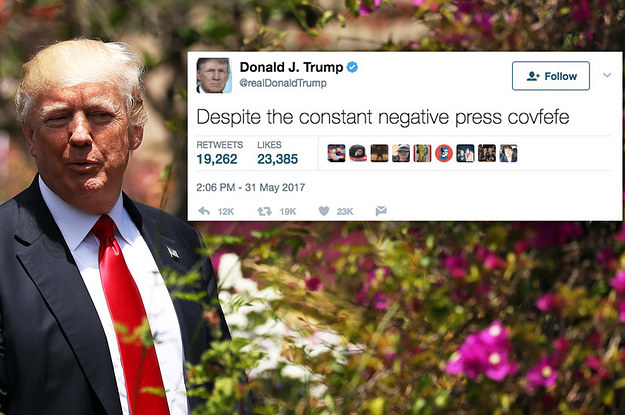
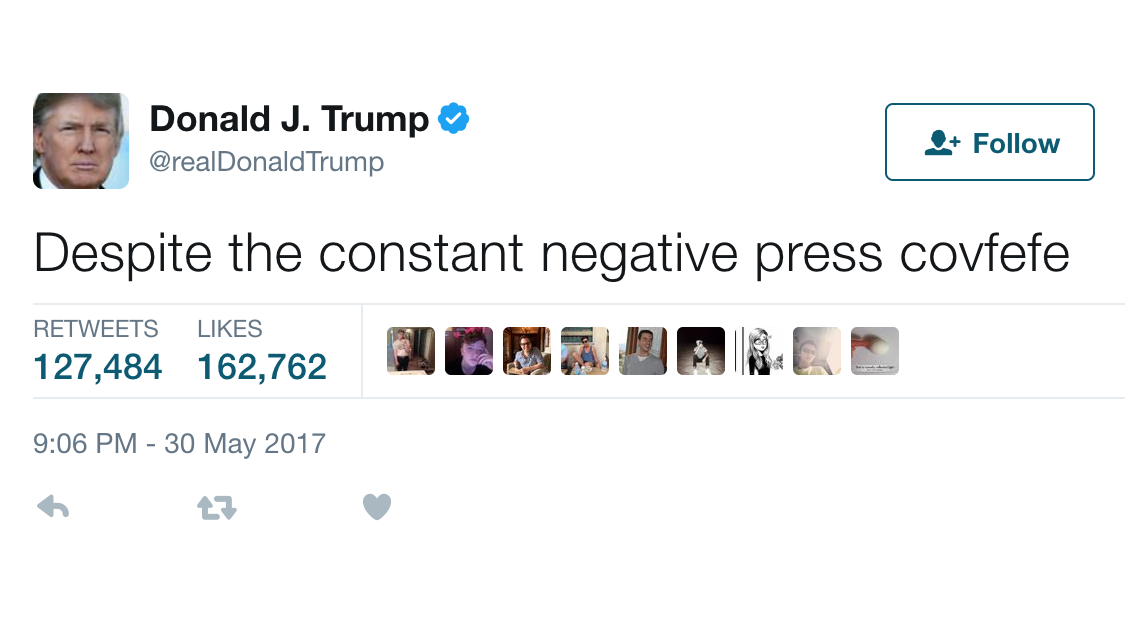

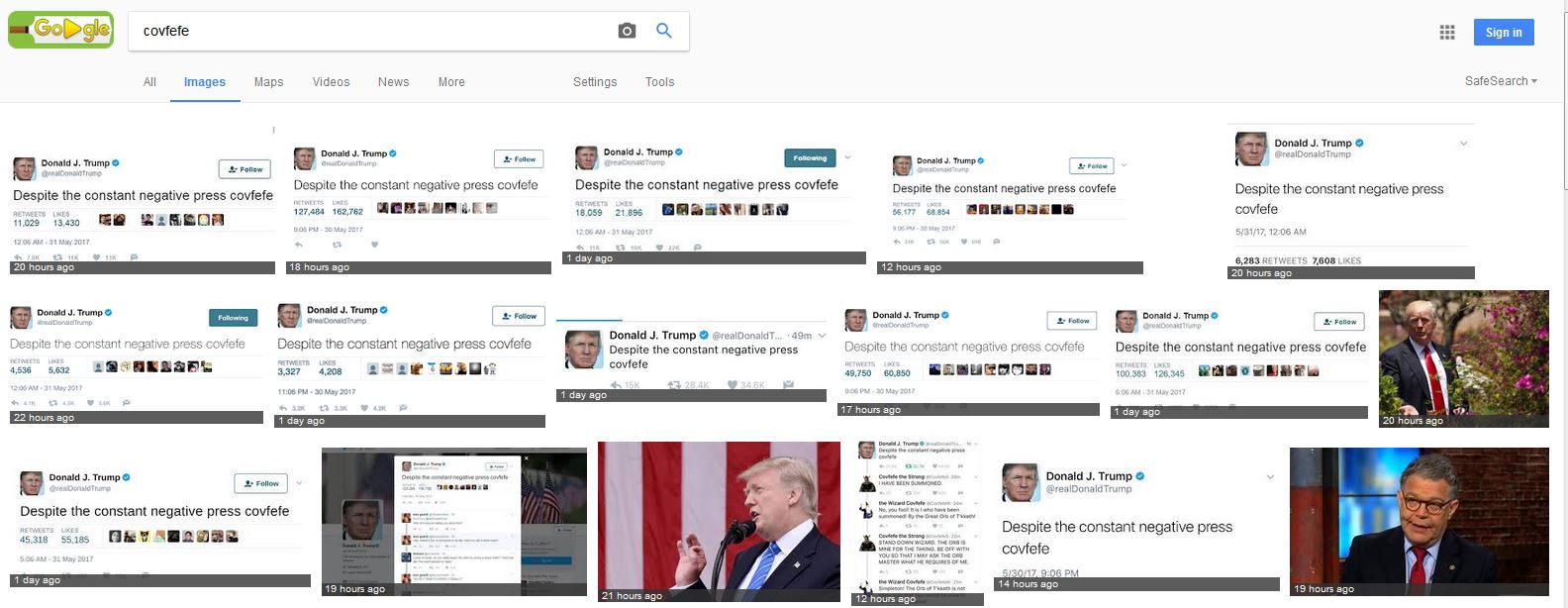
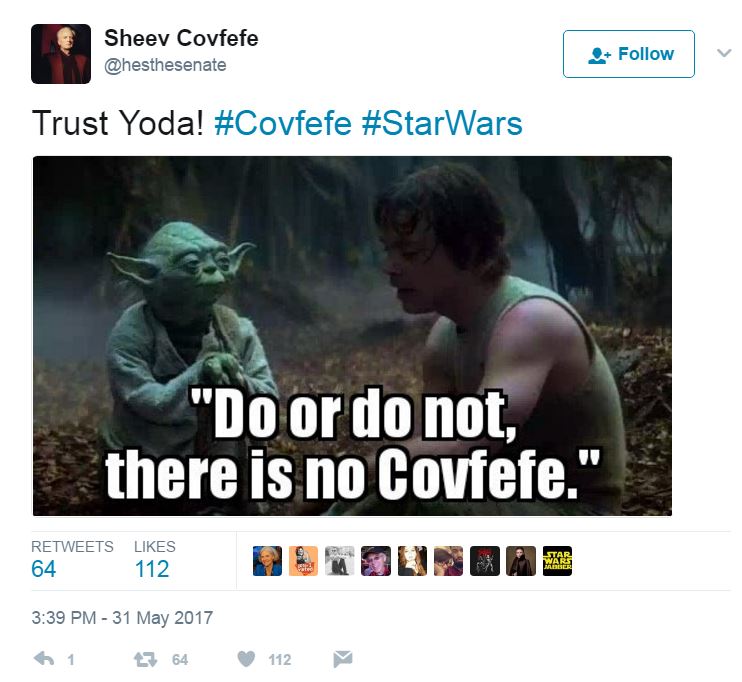
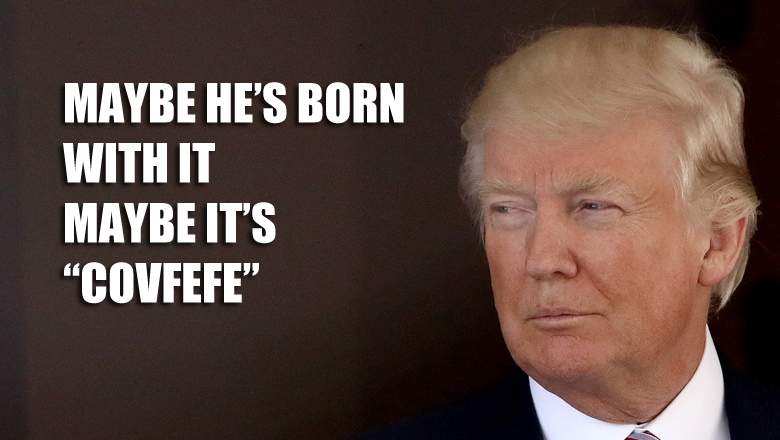


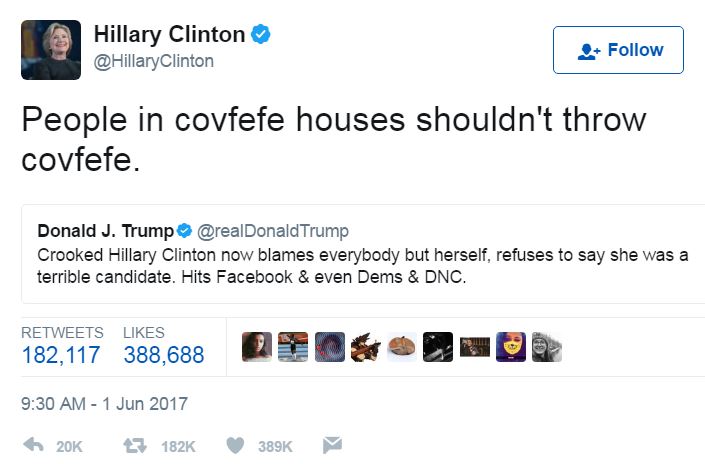
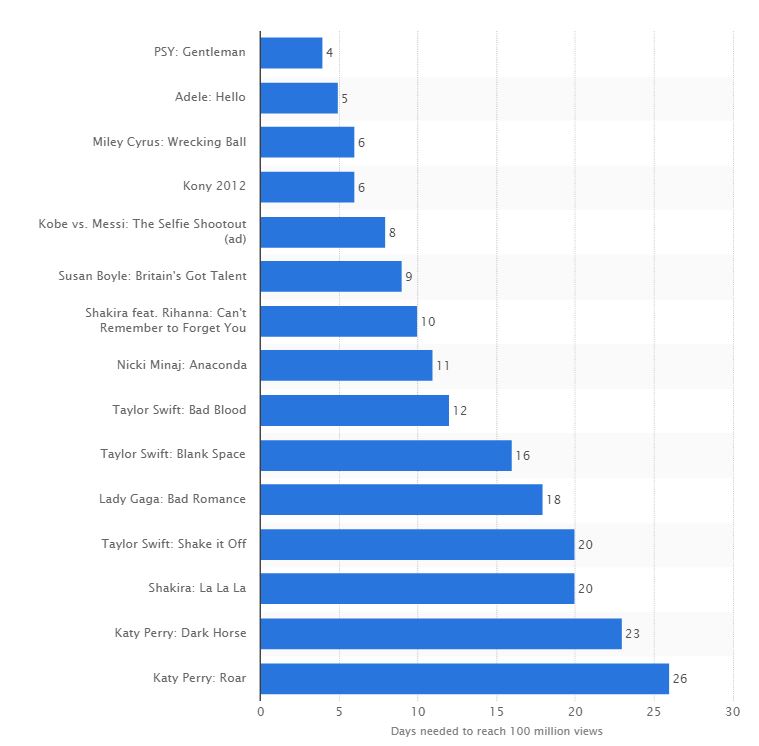

One Comment